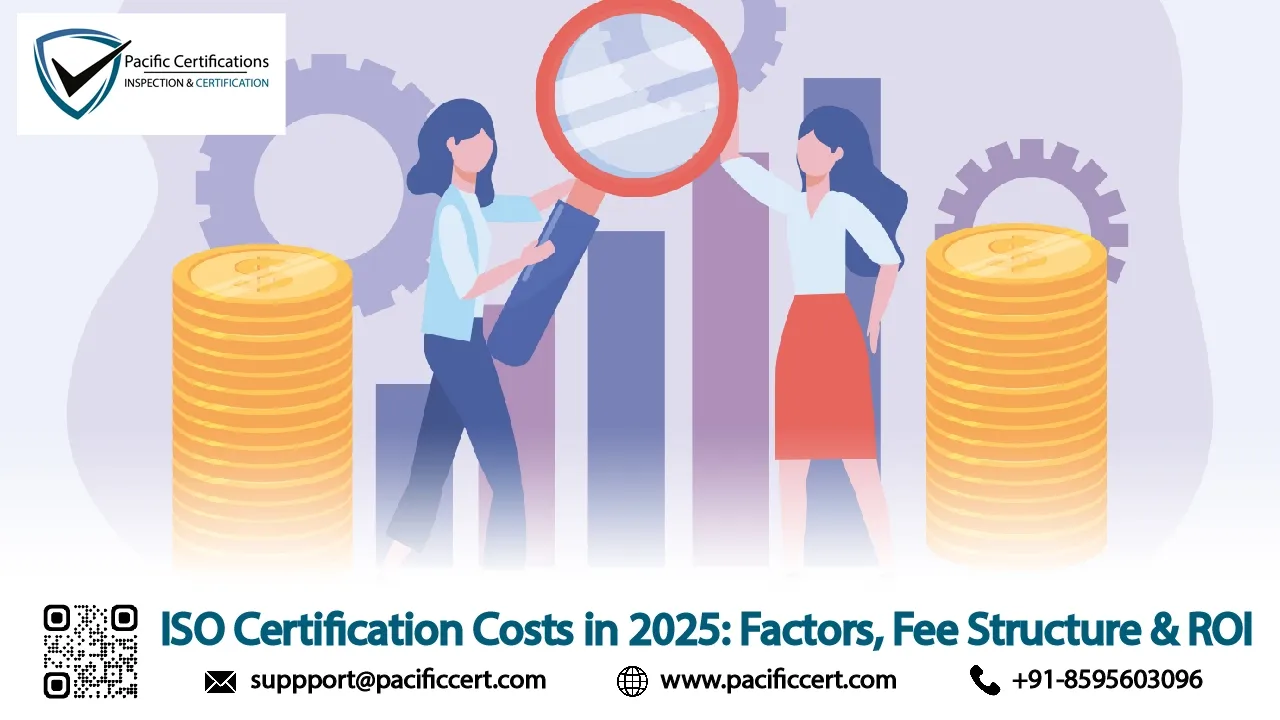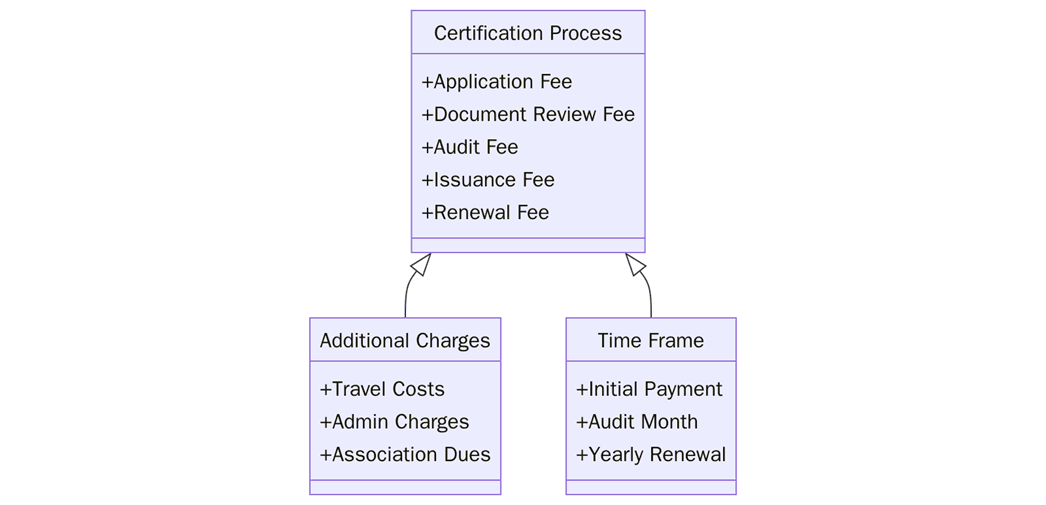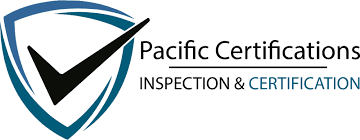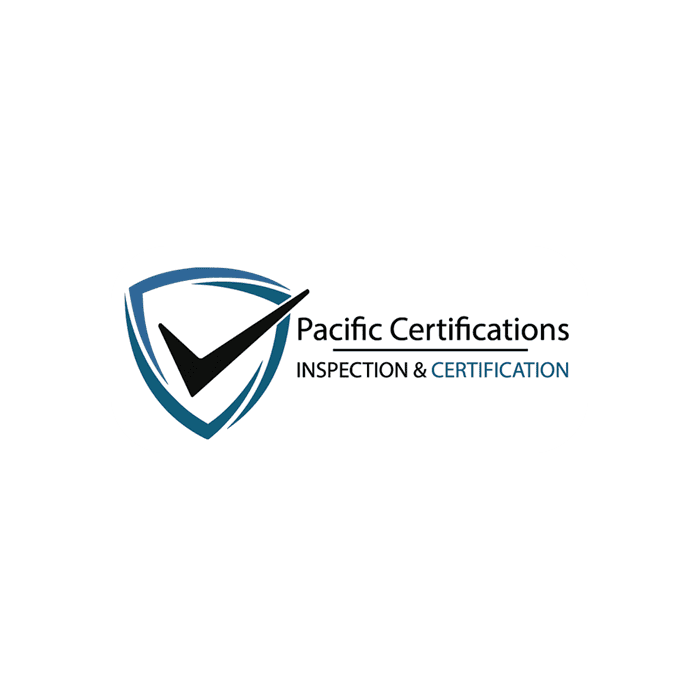ISO Certification Costs in 2025: Factors, Fee Structure & ROI

Quick Summary
ISO certification costs in 2025–2026 can range widely, but understanding the structure of external audit fees, internal system-building work, and the longer-term business value helps justify certification as a growth investment instead of an administrative expense.
The cost of certification is temporary. The value of disciplined operations lasts years - Pacific Certifications
Introduction
Most organizations begin an ISO journey with a single question — How much will certification cost? The answer isn’t simple because the cost depends on the size of the organization, the scope of work, the number of sites involved, and the maturity of current systems. In 2025, remote auditing options, rising labor costs, and the growth of multi-standard certification packages are reshaping how organizations budget for their certification projects.
An ISO certification is an important investment for companies wanting international recognition, better operating standards, and more credibility in the marketplace. Understanding the costs involved is important for both budgeting and decision making. There are many aspects of certification costs, such as range of the standard, size and complexity of the company, and the readiness of current management systems. When seeking ISO 9001:2015, ISO 14001:2015, ISO 45001 or any of the other industry specific standards, an estimate of costs will help eliminate surprises and lead to a successful certification process.
For more information, contact [email protected].
Key Cost Factors (2025-2026)
Factor | How It Impacts Cost |
|---|---|
Size & complexity | More employees, processes, and products require more audit days and preparation work. |
Number of locations | Each additional site requires sampling or separate evaluation. |
Number of standards | Combining ISO 9001 + ISO 14001 + ISO 45001 will cost more than one standard but produces shared efficiencies. |
Status of current systems | Businesses with existing formal procedures need less prep time than those starting from zero. |
Risk profile of the industry | High-risk sectors (food, medical, aviation, energy) require deeper review. |
Internal staff commitment | Internal audit, documentation updates, and training time carry real labour costs. |
Certification body approach | Fees vary by accreditation scope, audit duration calculations, and travel requirements. |
Certification Fee Structure
The fee structure for ISO certification generally includes the following elements:

- Application or Registration Fees: An initial payment to register with the certification body and initiate the audit process.
- Stage 1 Audit Fees: Costs associated with reviewing documentation, verifying system readiness, and identifying potential gaps before the on-site audit.
- Stage 2 Audit Fees: On-site audit charges for evaluating actual operations, processes, and compliance. These fees may vary based on the number of departments, locations, and complexity of operations.
- Surveillance Audits: Annual or periodic audits required to maintain certification status. These are smaller than the initial audit but important for continued compliance.
- Additional Costs: Travel, accommodation for auditors (if applicable), internal staff time, and any corrective action implementation costs.
Return on Investment (ROI)
ISO certification offers both real and perceived returns for investment. Certified organizations will experience an increase in consistent processes, a decrease in operation inefficiencies, and have better customer satisfaction. For companies attempting to expand globally, certification better your credibility and may be necessary to acquire contracts (especially in relation to regulated industries). When considering that the costs incurred to formalize the certification often leads to identifiable savings as a result of better processes, less errors and fewer fines, expensive, multiple financial returns are practically guaranteed. Ultimately, the certification will grow your market reach so that you can compete effectively at the provincial, national and international levels.
How to Prepare for ISO Certification?
Preparing for ISO certifications takes effective planning, clean documentation, and commitment at all levels of the organization. The first step is to review your current processes, procedures, and management system to assess the non-conformances to the ISO standard you want to be certified for. Then organizations should document their processes, including policies, standard operating procedures, work instructions, and records. Proper documentation shows process control to the auditor and shows that an organization is prepared for a certification audit. The organization should conduct internal audits to assess conformity with established ISO standards, identify non-conformances, and corrective actions taken before the certification audit. Organizations should also keep evidence of continued improvement, corrective actions and continued monitoring for ISO. Correcting past issues is less likely to yield non-conformities (NCRs) for the external audit.
Finally, a pre-audit or readiness assessment with internal or external auditors can highlight gaps and give the organization confidence that they are ready for the certification audit.
Plan certification as a 3-year investment cycle, not a Year-1 expense. Immediate value often comes from tender access; operational and cultural value builds gradually.
For more information, contact [email protected].
What are the benefits of ISO Certifications?
Below are some of the key benefits organizations gain from ISO certification:

- ISO certification allows standardised processes to be used consistently, reducing mistakes and providing products and services that are consistently delivered that meet customer requirements.
- Clients and partners are more likely to trust businesses that exhibit compliance with internationally stated standards, enhancing long-term relationships and repeat business.
- Certified businesses can more clearly define steps in a process, minimize redundancies, improve workflow and timeliness, and significantly reduce delays in their business processes.
- ISO certification may be required for participating in global markets, public tenders, or contracts, where businesses must obtain proof of requirements, therefore providing a competitive advantage for certified organizations.
- ISO standards create frameworks to clarify, monitor and reduce operational risk, compliance risk and safety risk, while creating protections against the risks and liabilities.
- Imparting ISO requirements into an organization promotes employee engagement, accountability and a culture of continuous improvement, contributing to long-term organizational viability.
- Reduce, re-use, recycle and compliance make processes easier to implement, errors significantly lower and often eliminate waste, fines and liability, while determining an organization's bottom-line, for better or worse, therefore inspiring organizations to commit to certification.
Market Trends & Research (2025–2026)
Recent industry surveys show:
- Around 45% of newly certified organizations worldwide in 2024 bundled at least two ISO standards, seeking efficiency and ROI.
- Remote audits now account for 30–50% of surveillance activities depending on industry — reducing travel cost.
- Cybersecurity and privacy concerns have driven a strong rise in ISO/IEC 27001 certification demand, especially among SMEs entering digital markets.
- Certification is increasingly written into government vendor eligibility conditions, particularly in construction, oil & gas, food, and IT services.
- Businesses switching certification bodies for better pricing or service quality increased by ~18% in 2023–24, showing stronger price sensitivity.
These shifts indicate that companies are expecting certifications to justify themselves financially, not just exist as a formality.
How Pacific Certifications can help?
Pacific Certifications, accredited by ABIS, provides independent certification services across ISO management system and product standards. Before an audit begins, we help organizations clearly define scope so they only pay for what is essential, without inflated audit durations or unnecessary add-ons.
We operate globally with a transparent and professional fee structure — whether audits are onsite, remote, or hybrid — supported by accredited processes under ISO/IEC 17021 & 17024.
Contact us at [email protected] or visit www.pacificcert.com to learn more about our services and how we can assist your organization in achieving ISO certification in 2025-2026.
Ready to get ISO certified?
Contact Pacific Certifications to begin your certification journey today!
Suggested Certifications –
Read more: Pacific Blogs

